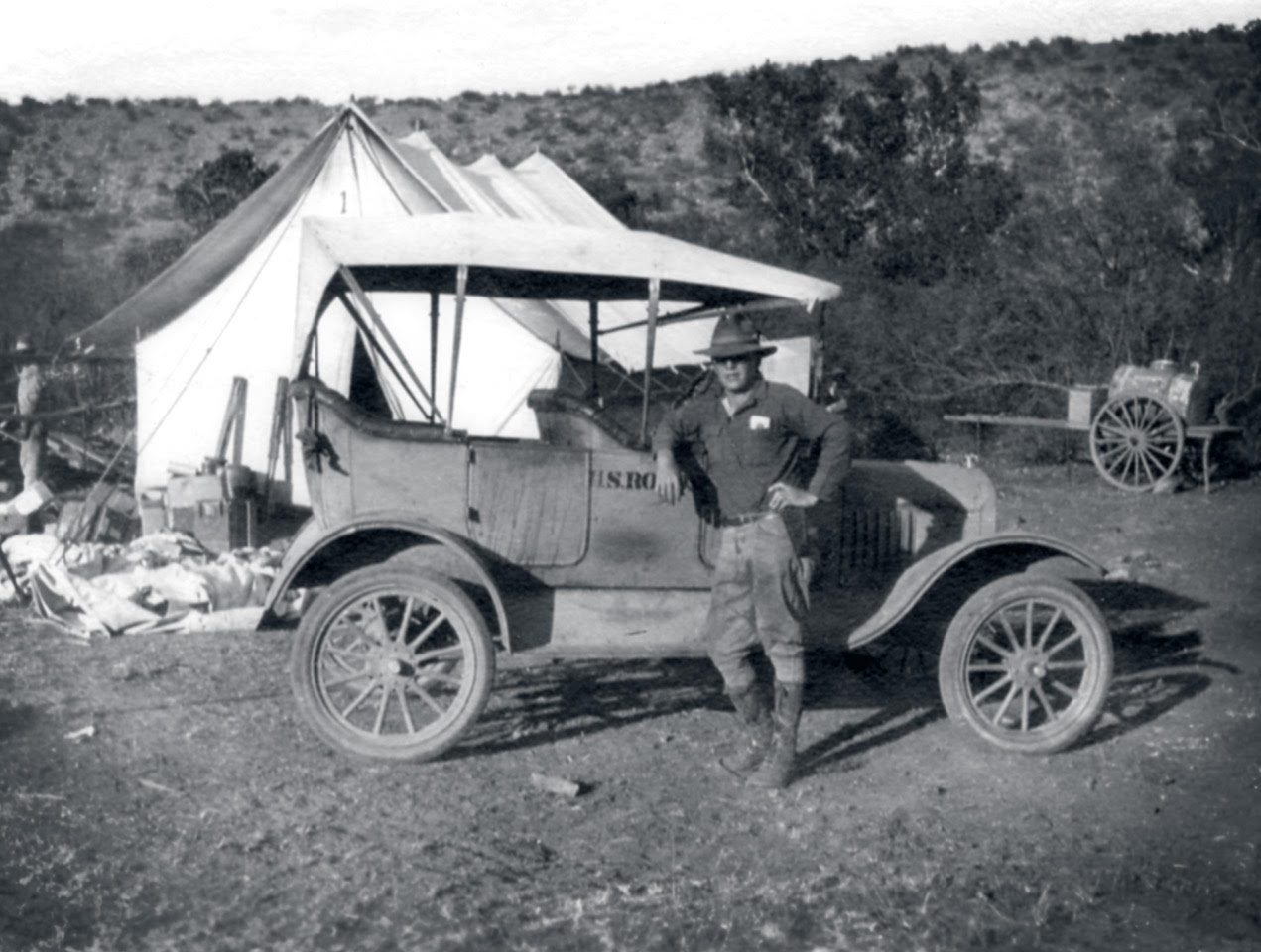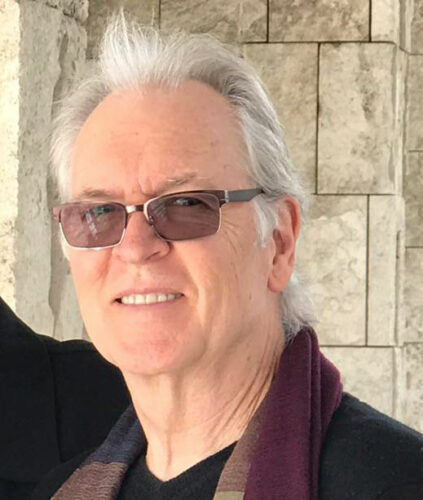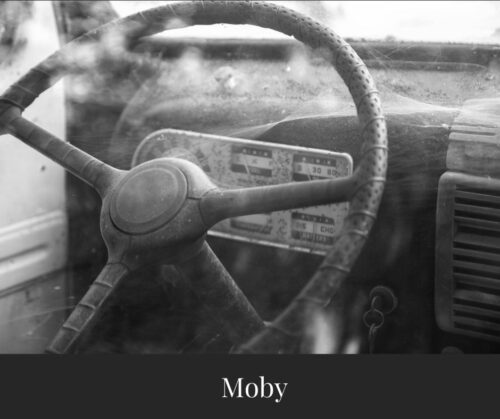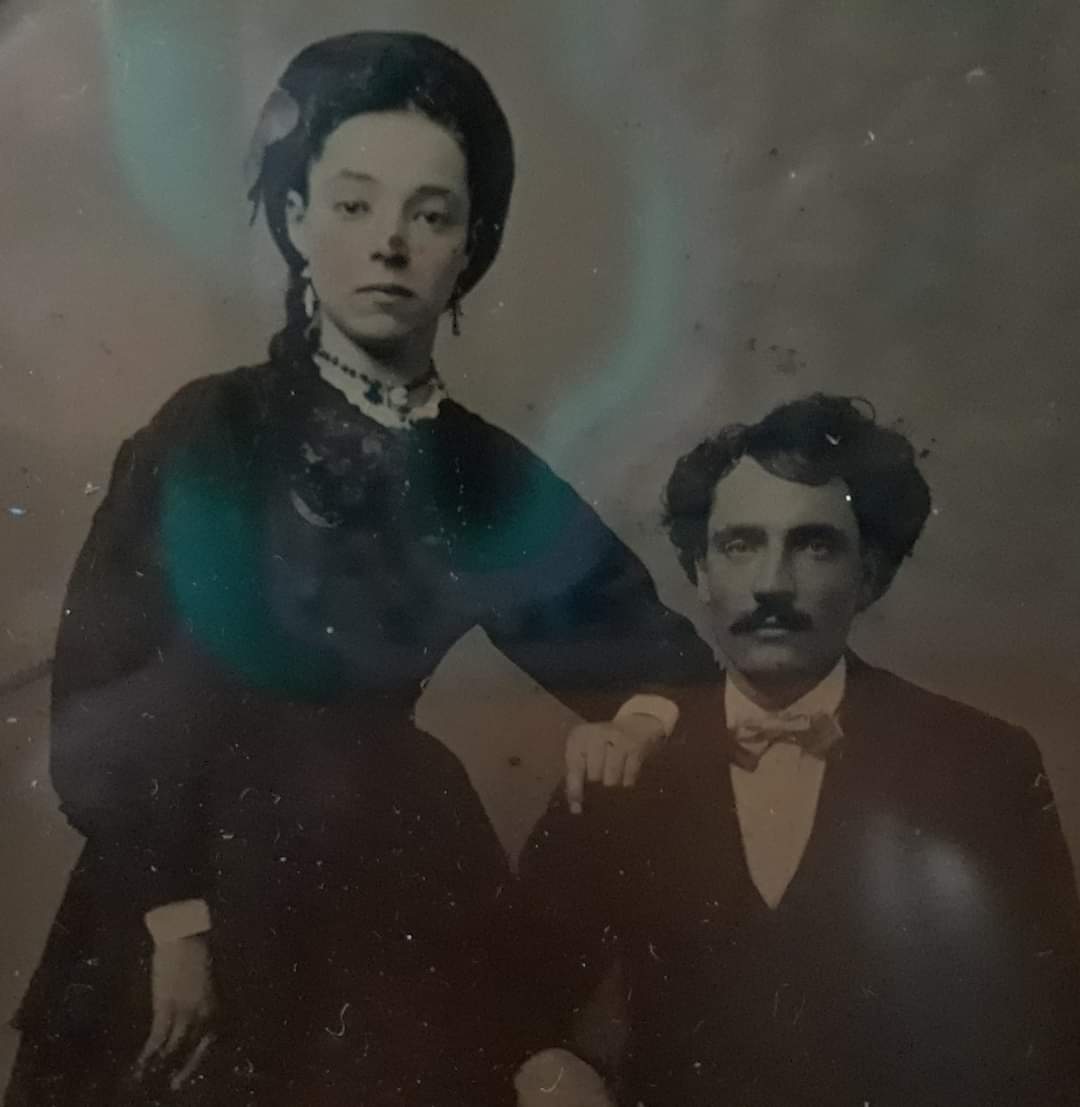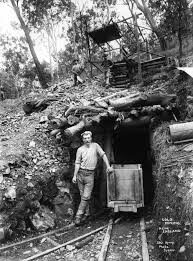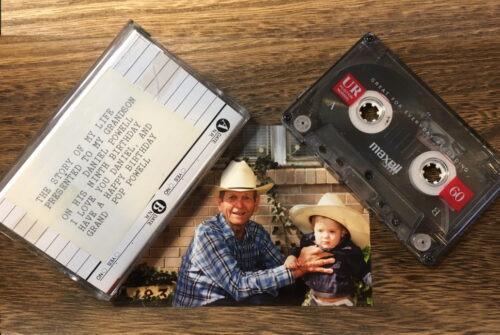
Daniel Powell of Liminal Legacy Media shares a fun story from his own history in this guest blog post. Inspired by his grandfather’s audio recordings, in 2019 Daniel founded Liminal Legacy Media using his extensive audio production skills. He is a master storyteller!
Haircuts & Oral Histories
“Hey, Grandpop! Shut your eyes!”
I say to my 80-year-old grandfather as I crouch behind the easy chair clutching a pair of kitchen shears.
{*SNIP*}
I emerge wearing a big grin.
“Ok, eyes open! Notice anything different?” holding back a giggle as I ask.
“Uh… well… no, Daniel, I don’t see anything different.”
“Ok, ok. Eyes closed!”
I duck behind the chair once again.
{*SNIP* – *SNIP* – *SNIP*}
Me: “Ok, how about now? Now do you notice anything different?”
Grandpop: “Well, nooo… No difference as far as I can see.”
I return to my hideaway, taking another lock of hair between my fingers.
{*SNIP* – *SNIP* – *SNIP* – *SNIP*}
And the fun of a 5-year-old giving himself a haircut continues. But, of course, my grandfather didn’t notice any of the changes I was making to my hair; he was legally blind! A fact I didn’t fully comprehend at the time. Eventually he did catch on though when Grandmother entered the room and filled him in on what had been taking place right before his eyes. He had a good laugh about it. Though my parents were considerably less entertained when they arrived later that day.
Grandpop was a good man, and obviously, a great sport playing creative games made up by his grandson.
I consider myself very lucky. You see, Grandpop took it upon himself to record a detailed account of his life story for his kids and grandkids. In fact, he was the only one of my 4 grandparents to do so before passing. Being a blind man, writing wasn’t accessible to him. So, sitting in that same easy chair I used to hide behind, he took to his cassette tape recorder and immortalized the tales of his past in the sound of his own voice.
Listening back at the age of 34, I’m forever grateful to him for it.
He told all about his humble beginning on the family farm in rural Arkansas, leaving home during the Great Depression to work with the CCC, and of his 2 decades of service in the USAF spanning both WWII and Korean wars. He had quite the storied past.
Such a wealth of stories and information is communicated through these recordings. But there are moments I find myself shouting at him through my headphones:
“Whoa, whoa, whoa. Grandpop! SLOW DOWN! Stop the tape! REWIND! I want to hear more about THAT.”
But paying no heed to my pleas, he’s already told his brief recount and moved on to the next part of his tale.
Oh, how I wish I could’ve been there to ask him in-depth questions about his life as he told his tale.
We know our own stories very well. But the difficult part comes in discerning what others may want to know about our stories. Well… unless they’re in the room with you asking questions and expressing curiosity.
Whatever it takes for you to record your stories, do it!
Whether you write, record audio, or even make a video, just do it!
And I can’t encourage you enough to invite others into the story telling process with you. A curious individual, a good interviewer, or coach can help you tell your story so much more completely and draw out the depth, vibrance, and important details of your lived experiences.
There’s something quite miraculous that takes place in this collaborative and interactive way of telling your stories. Questions raised by your counterpart can bring to light connections between pieces of your story that you may have never even realized beforehand. And when we’re really lucky these questions can even result in new self-realizations. There’s no moment more precious for your memoir than reflecting back on lived experiences and learning something new about yourself in the process!
Through my work helping individuals record their Liminal LegacyTM Immersive Audio Memoirs, I’ve found that when left to ourselves, just like my grandfather, we all tend to cut our own stories short {*SNIP*} and {*SNIP SNIP*} cut off many important details that others would find great value in. And oftentimes {*SNIP SNIP SNIP*} we cut out details because we’ve simply forgotten them. Though through some strange alchemy in the process of sitting with a curious person or a good interviewer, many of these details can begin to come back to light again.
Just like a grandchild who’s very poorly barbered their own hair, your stories will be beautiful, regardless of how completely they’re told or how much detail they contain. Just sit down and do it whatever way you can! But one thing that remains true of both storytelling and haircuts, when you do it all on your own it can be hard to ensure your not cutting off the best bits.
***
Thanks for reading, I bet you have a smile on your face and a few ideas for your own story! I know you’ll want to stay in touch with Daniel and his oral history work. Here are a few ways you can find him:
Web Site: www.liminallegacymedia.com
Instagram: @liminallegacymedia
YouTube: Liminal Legacy Media
Facebook: @liminallegacymedia
Daniel prizes the oral tradition and through his company, Liminal Legacy Media, helps you tell your story through Immersive Audio Memoirs. What exactly is an Immersive Audio Memoir? These legacy audio documentaries lie somewhere between ‘radio theater’ and ‘intimate interview’. Your voice tells the story while powerfully designed audio imagery evokes the scene in the mind’s eye of the listener. Daniel currently lives in Grand Rapids, MI with his wife and 2 young daughters.
Contact Daniel today for more information or to start recording your Liminal Legacy!
